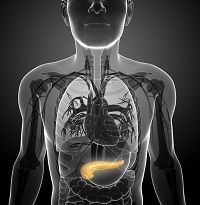Article
Bionic Pancreas and Beyond
Author(s):
Edward Damiano, PhD, Professor of Biomedical Engineering, Boston University shared his 2013-2015 research results surrounding the acclaimed bionic pancreas at the 24th American Association of Clinical Endocrinologists Nashville, TN.

Edward Damiano, PhD, Professor of Biomedical Engineering, Boston University shared his 2013-2015 research results surrounding the acclaimed bionic pancreas at the 24th American Association of Clinical Endocrinologists Nashville, TN.
The bionic pancreas system, still under development, consists of “a Dexcom continuous monitor (CGM), 2 Tandem t:slim infusion pumps that pump insulin and recombinant glucagon through the skin, and mathematical algorithms that receive updated CGM readings.”
The system was noted to make autonomous decisions about insulin and glucagon dosing every 5 minutes.
Damiano’s technology, a “closed loop” dual-hormone system, recently tested in actual clinical trials, mirrors the normal function of the pancreas in that it automatically regulates glycemia in patients afflicted with type 1 diabetes by administering insulin to lower blood glucose and glucagon to raise blood glucose.
In the first three outpatient studies of adults, adolescents, and pre-adolescents with type1 diabetes, patients underwent therapy with the bionic pancreas for 5 days and therapy with their own insulin pump for 5 days.
The fourth outpatient study was a home-use study in which subjects received therapy with the bionic pancreas for 11 days and therapy with their own insulin pump for 11 days both at home and in the workplace.
Damiano noted there were no restrictions placed on their activity level, exercise, or diets, and the system was initialized only with the patient’s weight. Additionally, no information about the patient’s usual insulin regimen was provided to the algorithm.
The results found that compared with patients’ individual insulin-pump therapy, the bionic pancreas simultaneously reduced the average CGM glucose levels and hypoglycemia within all four studies — 133, 142, 137, and 141 mg/dl, respectively, and the percentage of CGM glucose valued below 60 mg/dl was 1.5, 1.3, 1.2, and 0.6%, respectively.
Based on these results, Damiano explained that the bionic pancreas would deliver mean HbA1c levels of approximately 6.5% in children and adults with type1 diabetes while significantly and simultaneously reducing hypoglycemia relative to the current standard of care.
“The point is the device is using the same amount of insulin, but we’re distributing It in a much more optimal way,” said Damiano.
Their team plans to begin the final clinical trial in 2016 using the more portable, fully integrated unit, with the goal of bringing the device to market by late 2017.




